Following on from the previous post about Largo Curling Club, it is worth pointing out that for a time there were three curling ponds in the villages. The 1912 O.S. map above shows these three ponds (ringed and numbered in green):
1. Lundin Links Curling Club's pond by the 9th tee of the Lundin Ladies Golf Club
2. Largo House Pond (original home of Largo Curling Club)
3. Upper Largo's artificial pond (created in 1905 for Largo Curling Club
When Largo Curling Club moved to their new artificial pond in Upper Largo in 1905, many of the curlers that lived in Lundin Links decided the time was right to create a new pond in their village too. Lundin Links Curling Club was formed around this time (not to be confused with the pre-existing Lundin and Montrave Curling Club that had been around since 1885 and had a pond on the Montrave estate).
The 27 December 1906 Leven Advertiser (below) refers to both Montrave and Upper Largo ponds before noting that the folks of Lundin Links had "set about realising the ambition of having a pond" and that it was to be "at the side of Fir Park". Note that this was 1906, and therefore was three years prior to the move of the Lundin Ladies Golf Club to its present course. So the nearest landmark at the time really was Fir Park (the substantial cluster of trees close to the Lundin Links Hotel). The "ample water supply" mentioned is the Hatton Burn.
The more detailed 1912 map above shows that there was a small building to the west of the pond, presumably for storage of the curling stones and other equipment (which were of course too heavy to be brought along for every match). Most ponds had a 'curling house' for this purpose, of varying degrees of grandeur. The curling house at the Gosford Estate in East Lothian is shown below.
From its 1905 origins, the Lundin Links club continued for several decades. Various fund raising efforts took place over the years. For example, the above 'Great Jumble Sale' (December 1921) was in aid of new artificial rinks. This suggests that the original 1906 pond was something basic and more natural - the flooding of a low lying dip perhaps rather than a man-made surface. Below is an advert for a 'Grand Concert' in the Montrave Hall in April (Leven Advertiser). This concert was to raise money to repair the curling pond. Artistes came from Kirkcaldy to perform - arranged by Mrs Nisbet of Beffens. She performed herself in an "amusing sketch". There were two one-act plays, violin selections, songs, piano playing and recitations (21 April Dundee Telegraph).
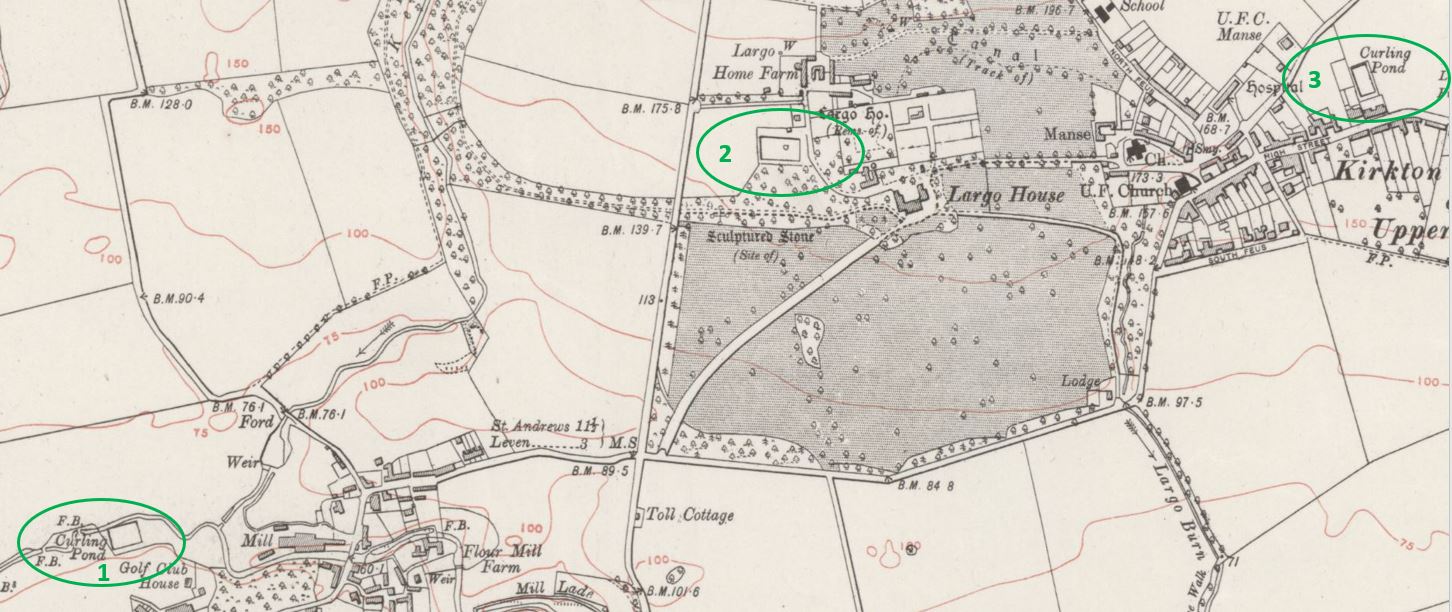
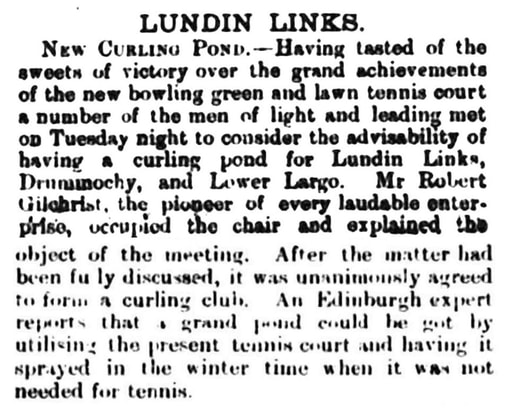
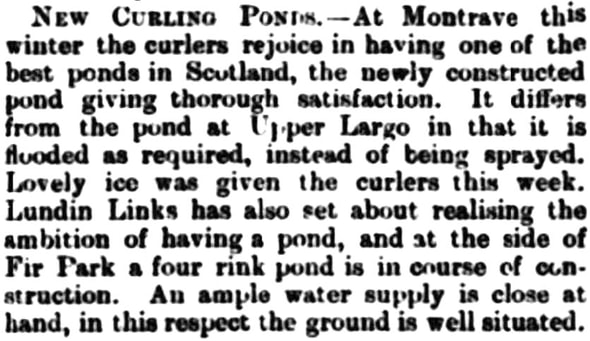
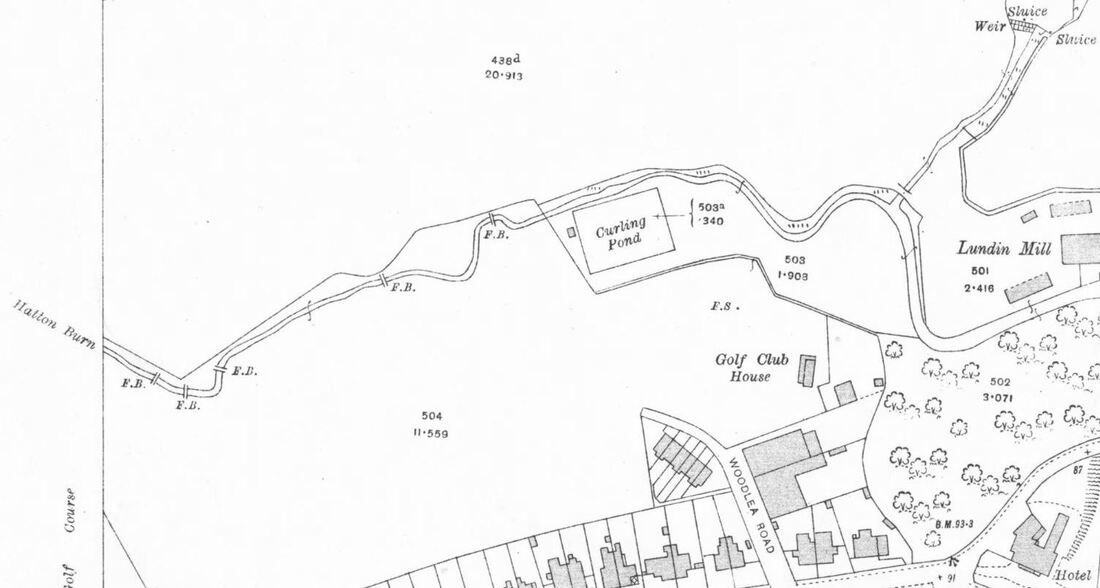

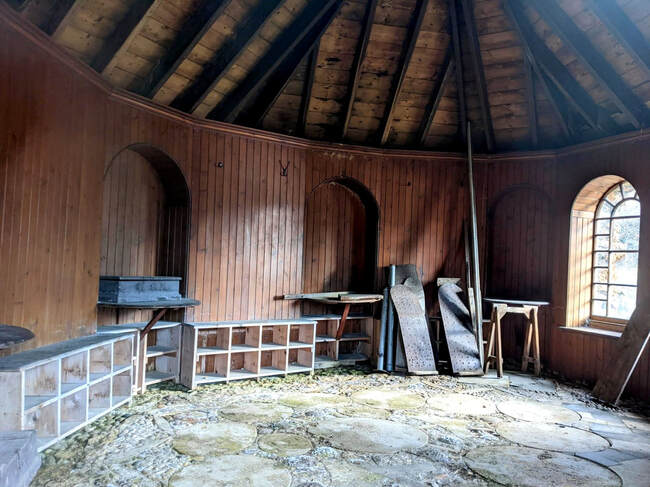
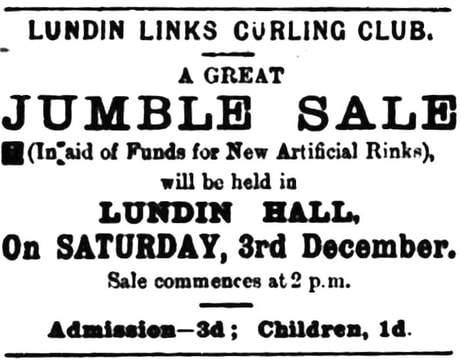
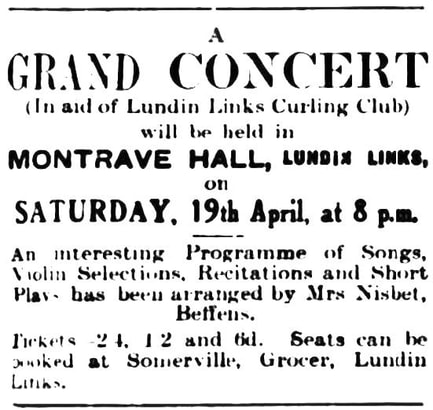
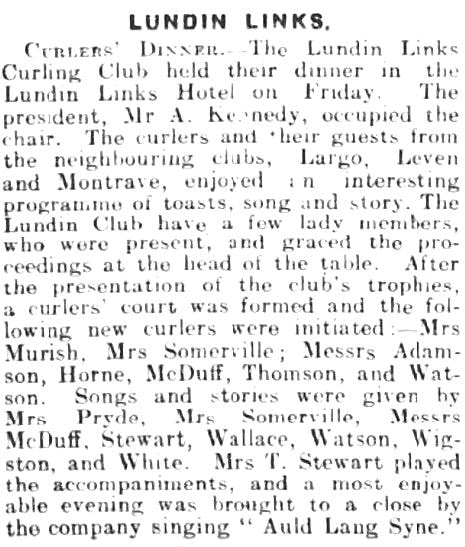
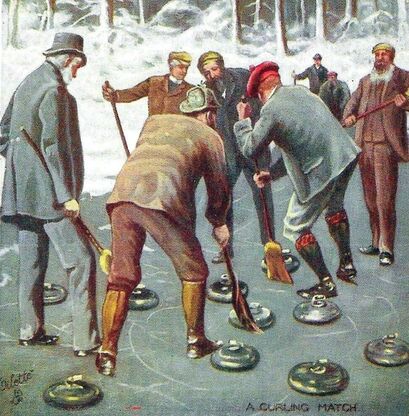
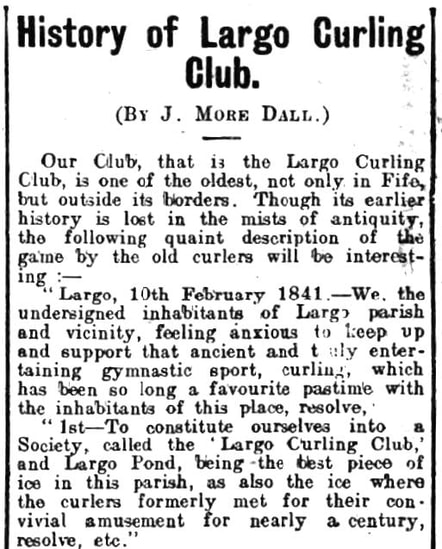

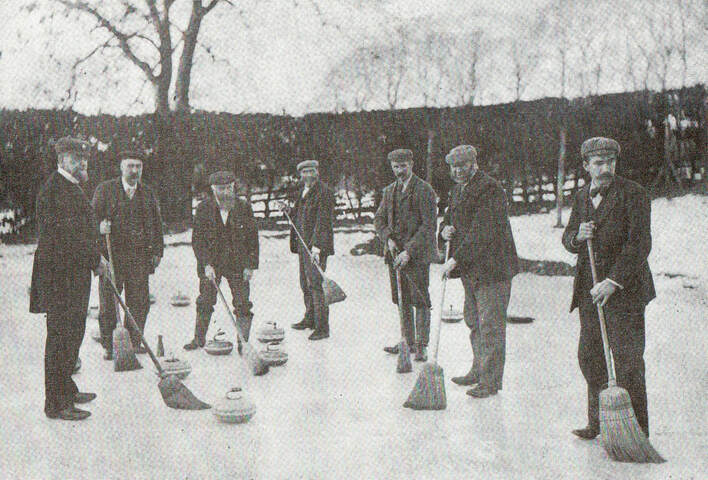
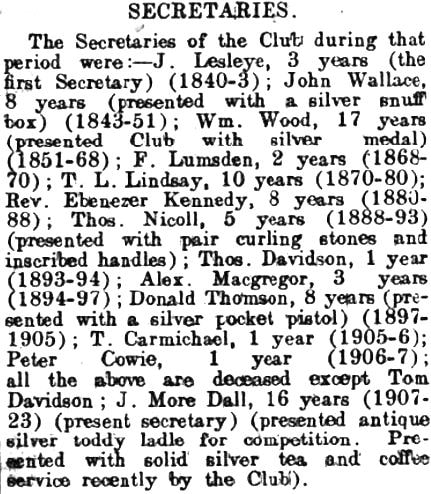
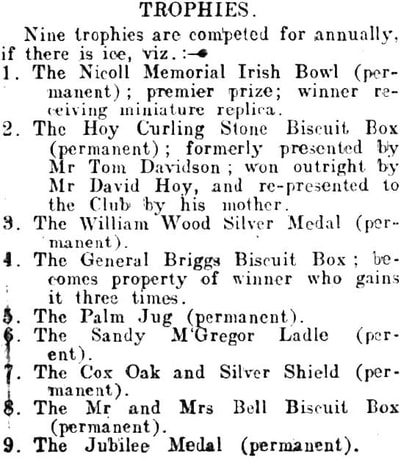
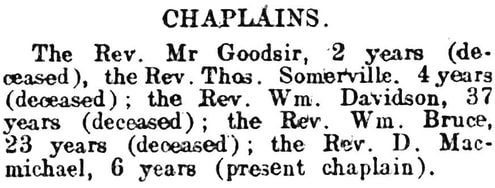
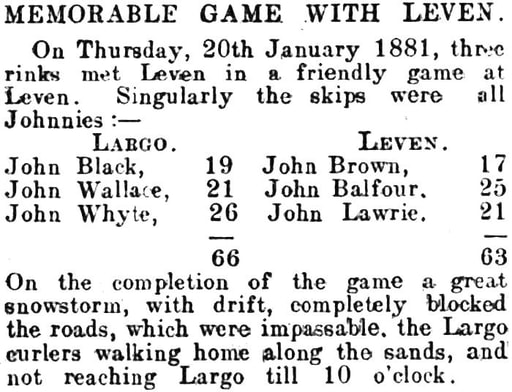
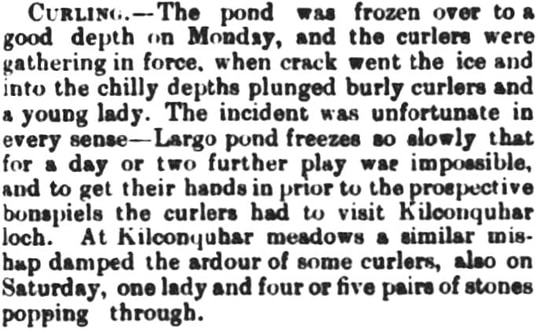

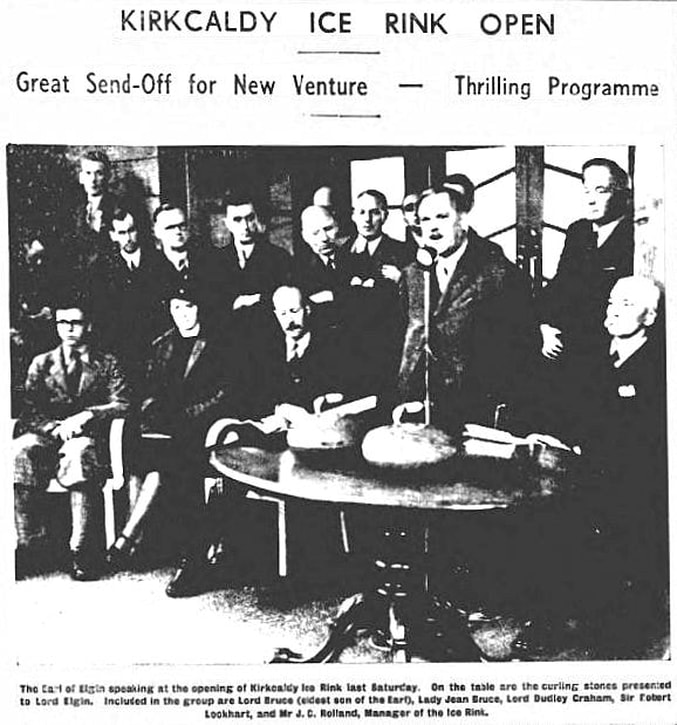
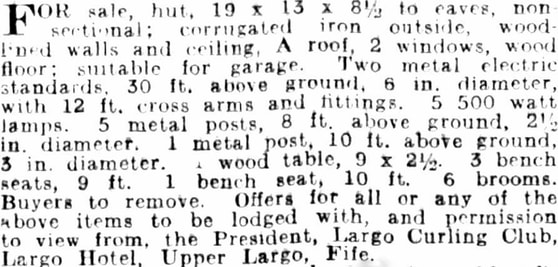
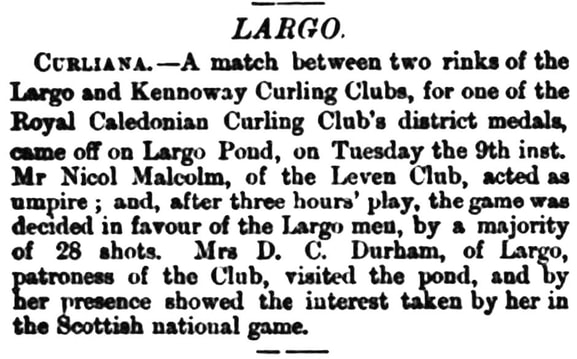
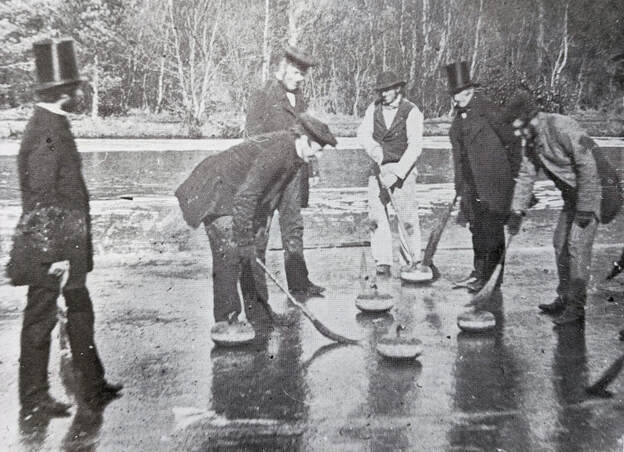
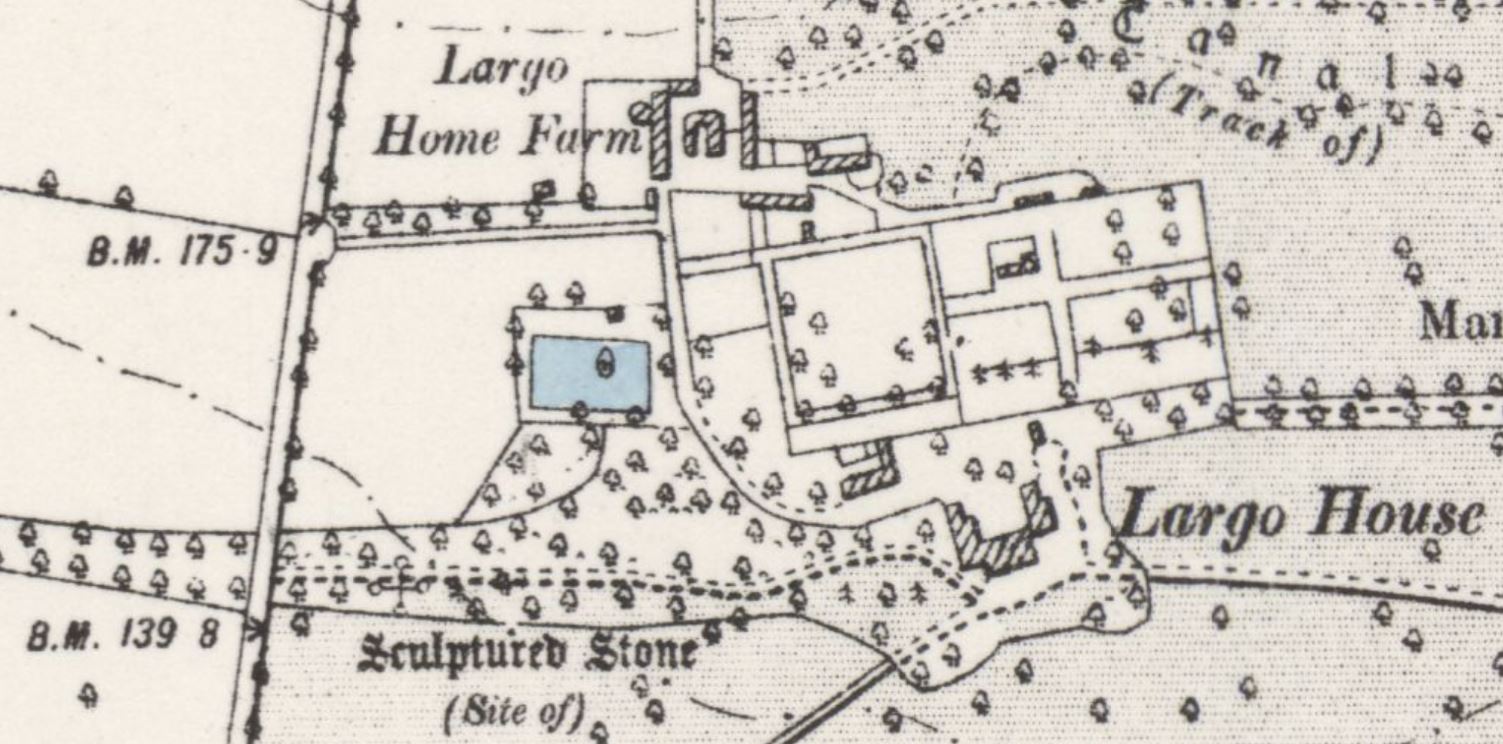
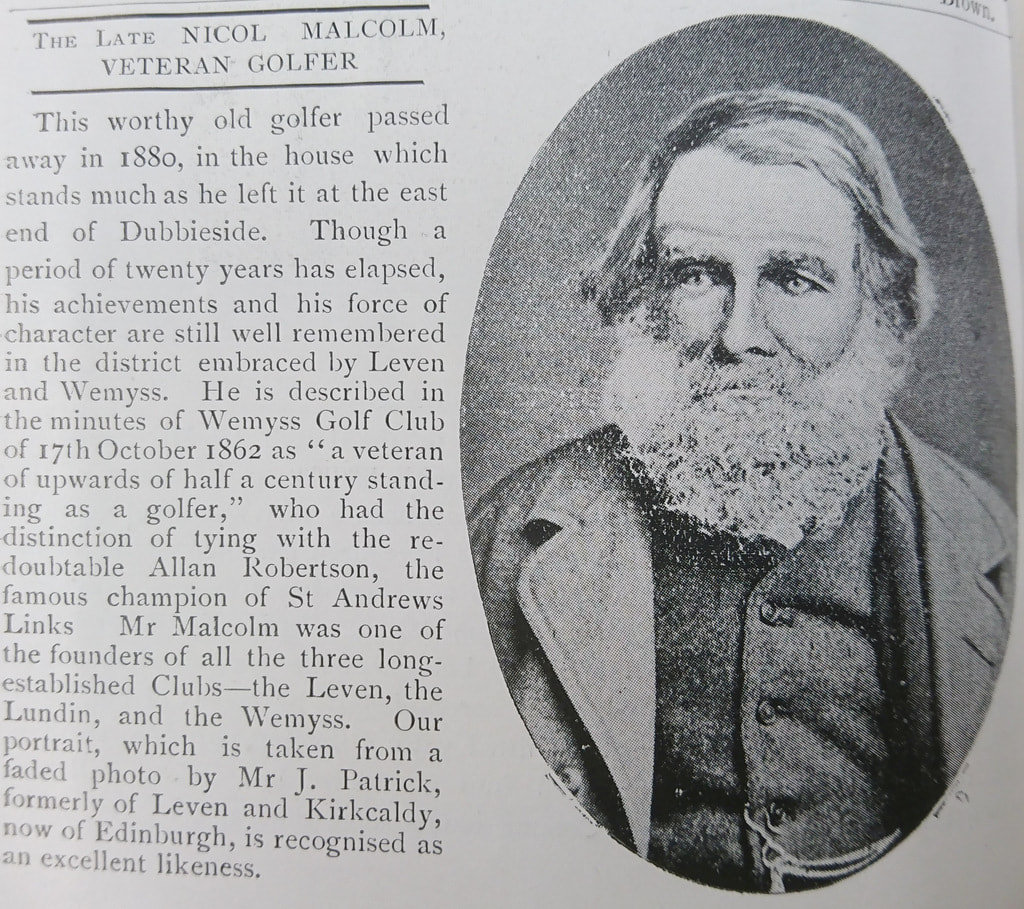
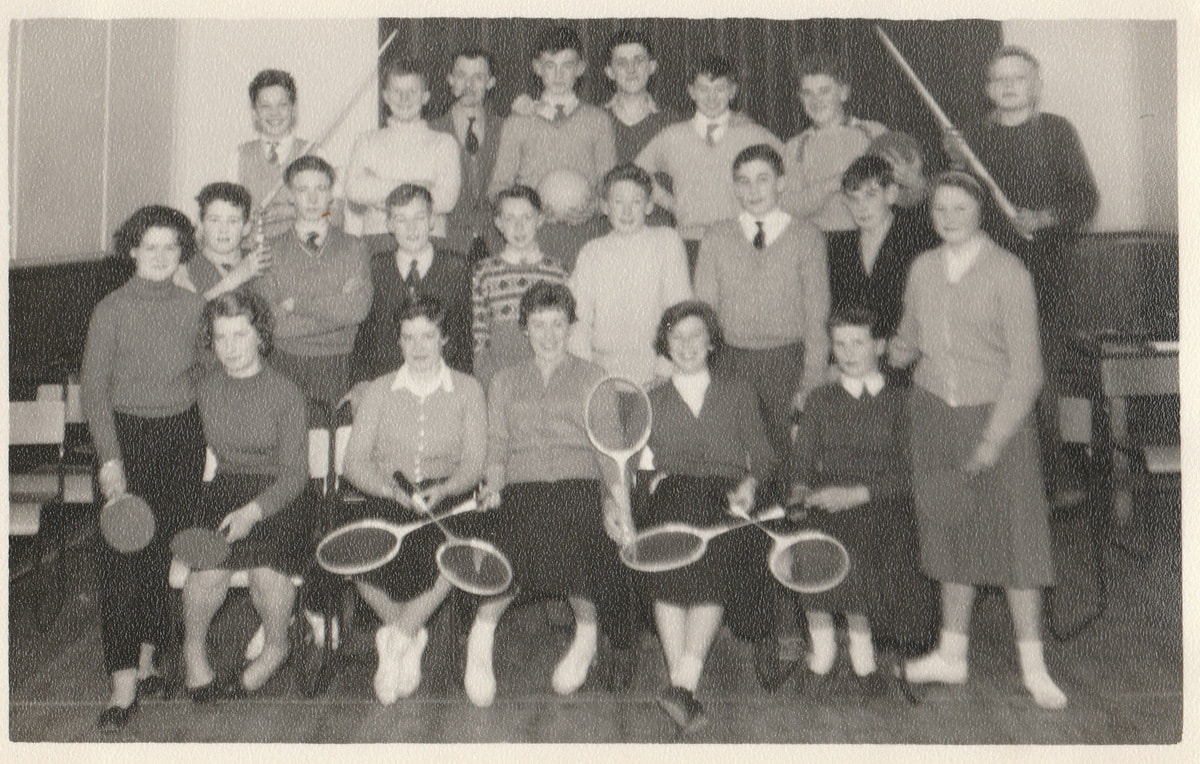
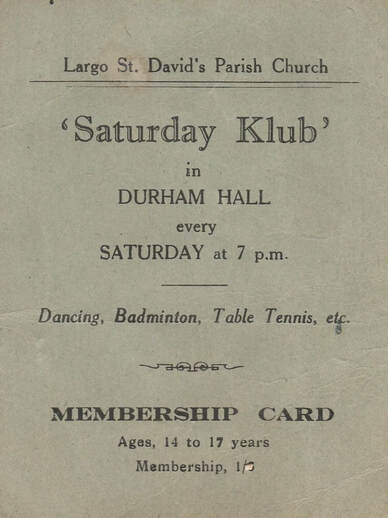
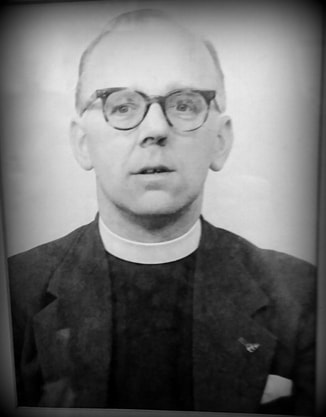
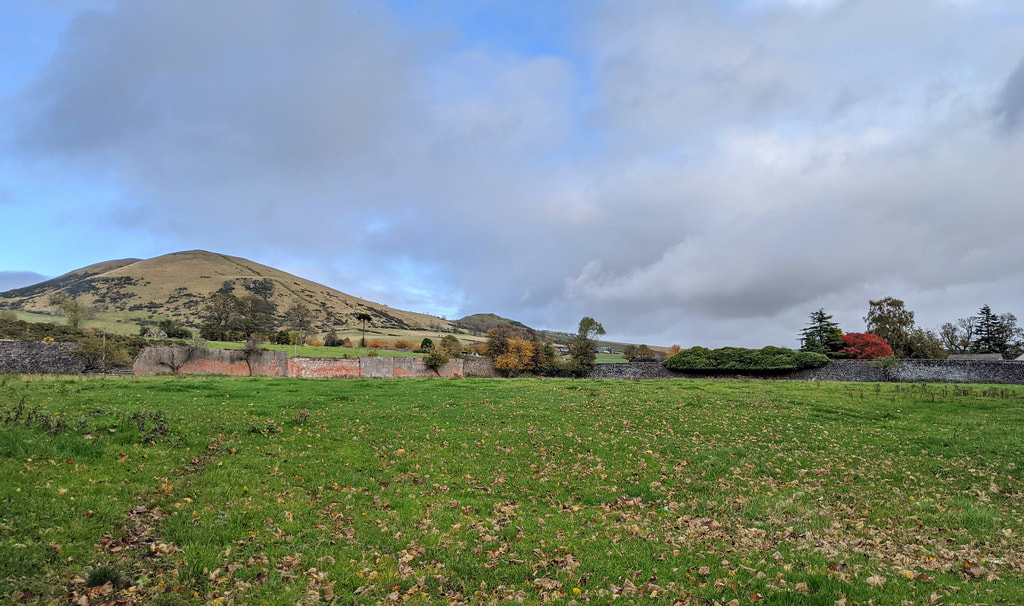
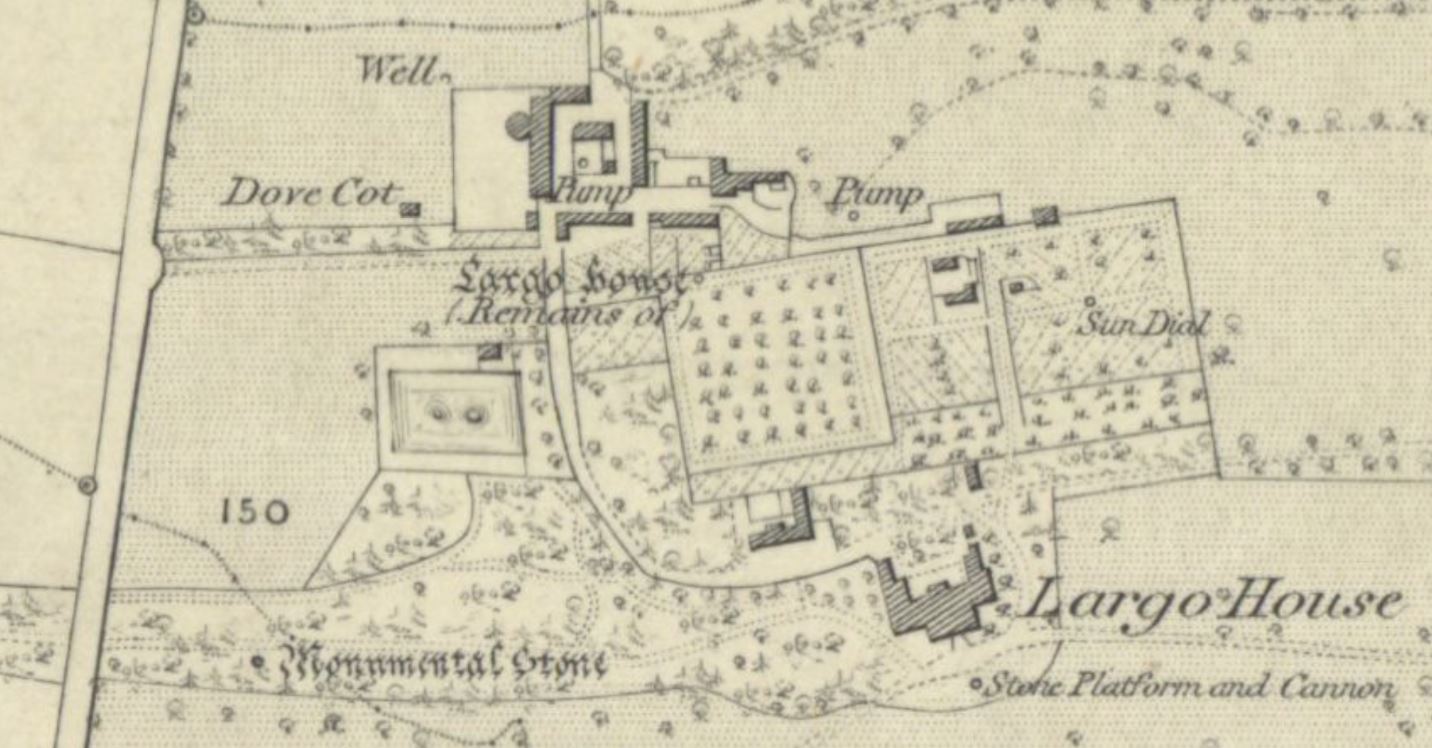
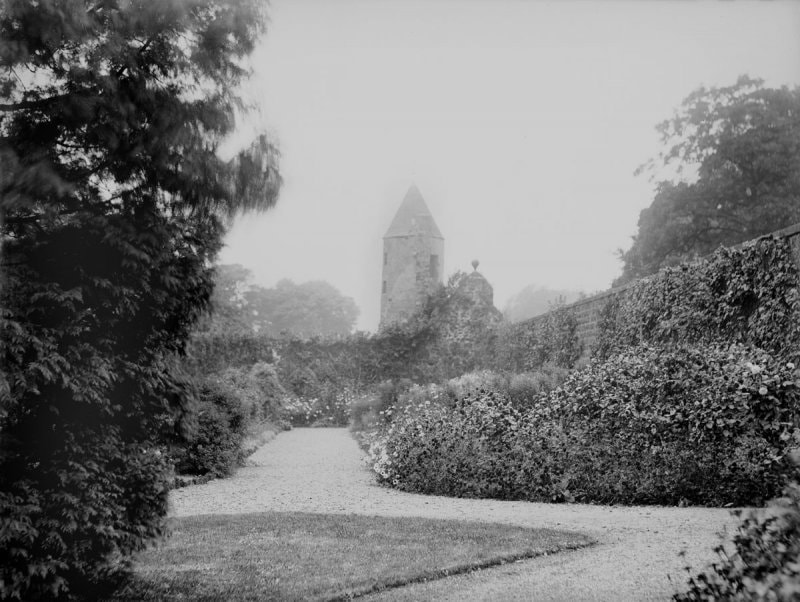
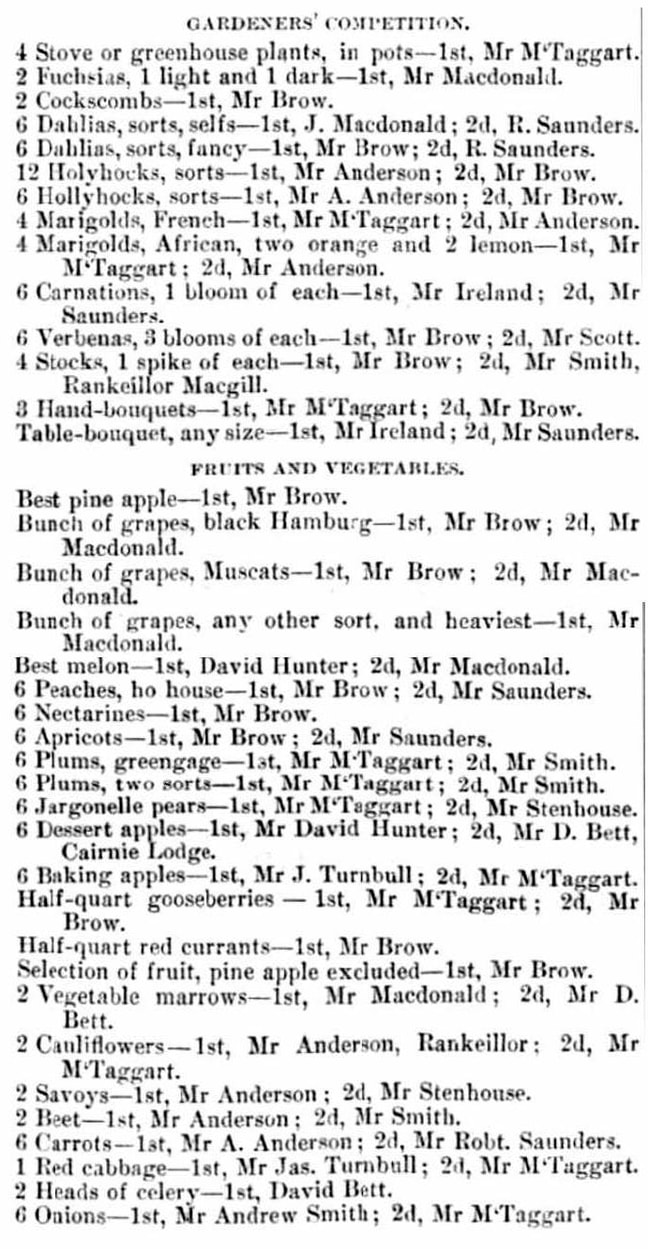
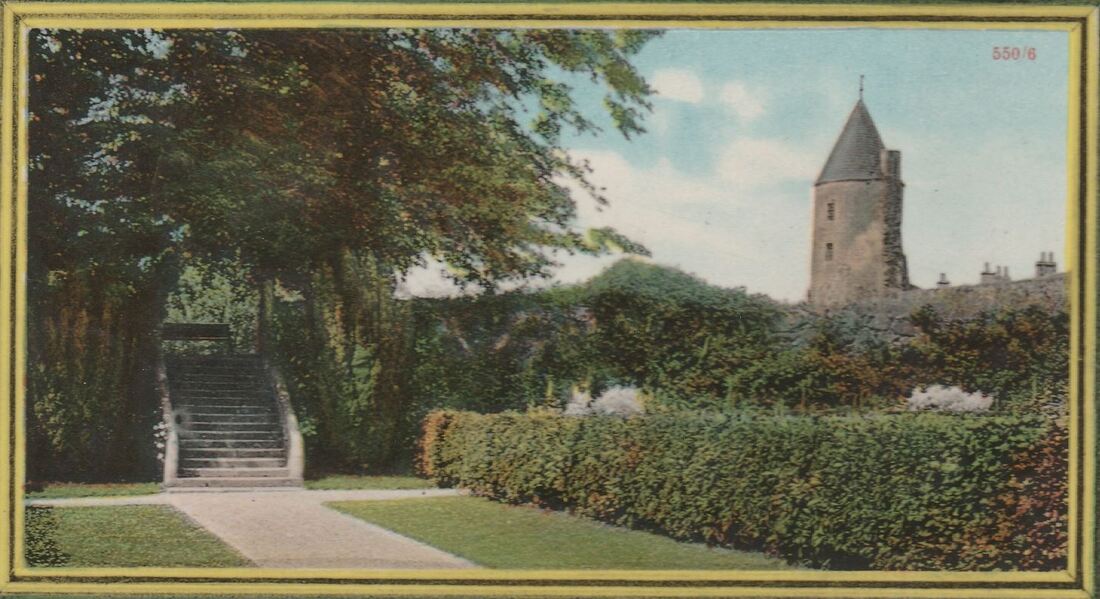
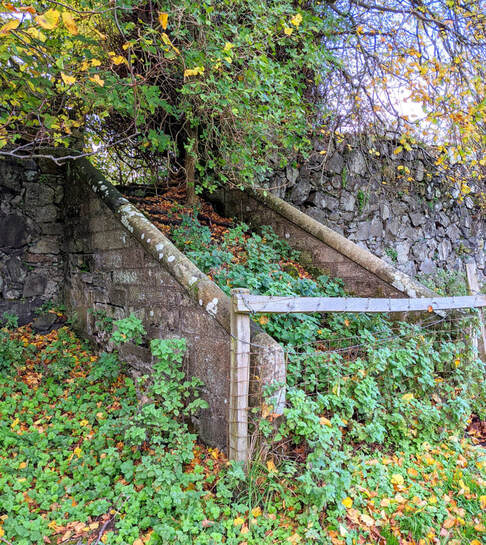
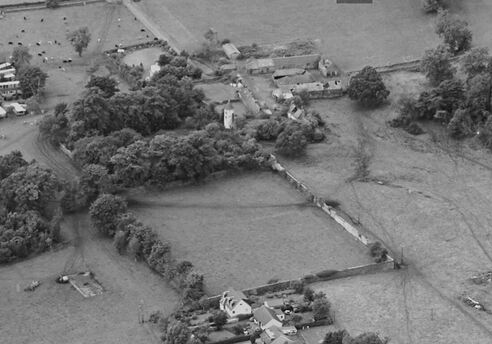
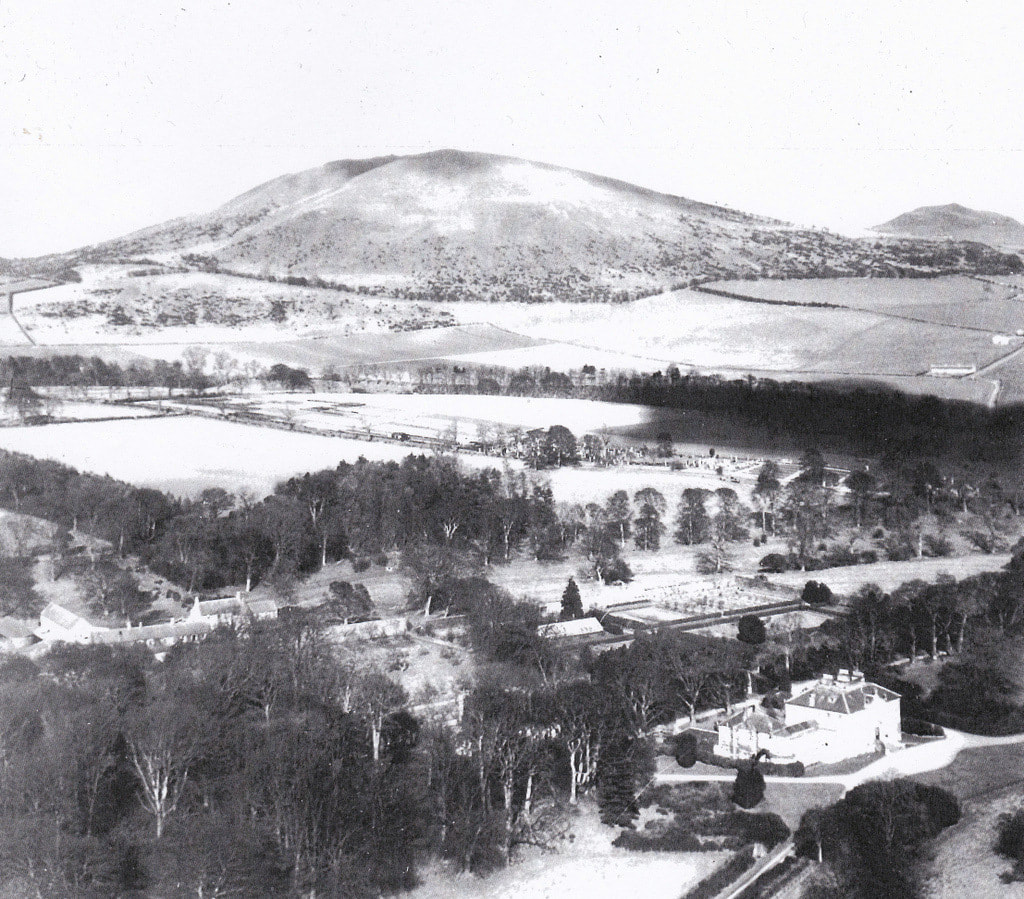
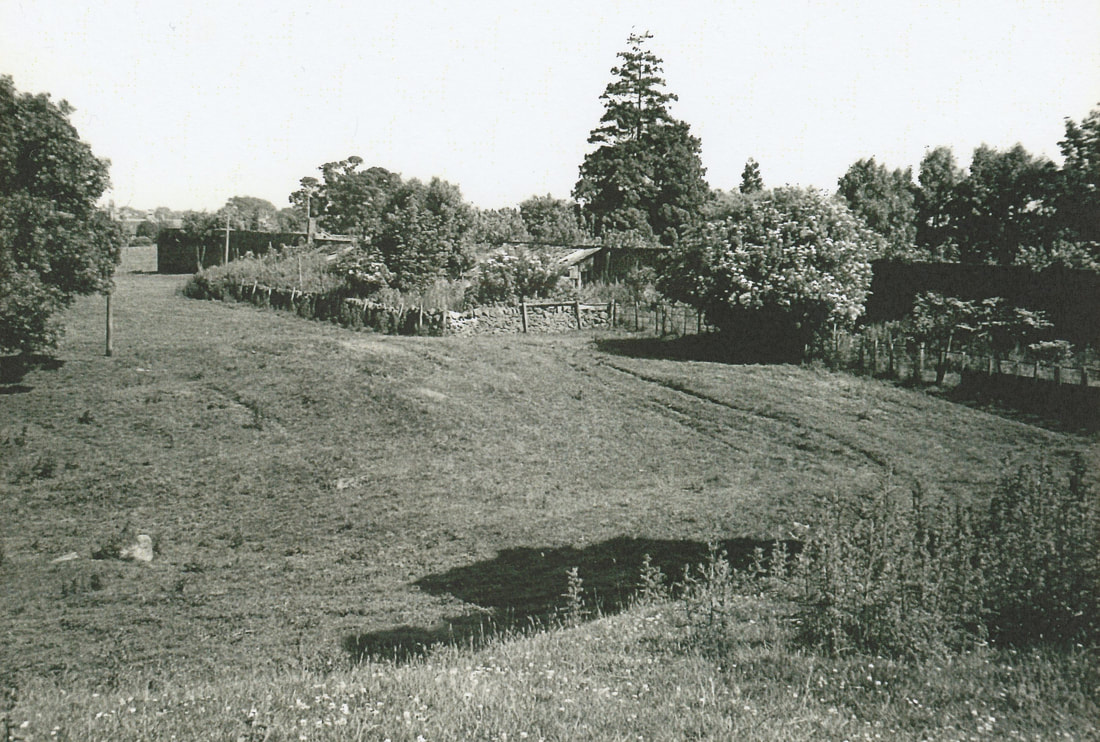
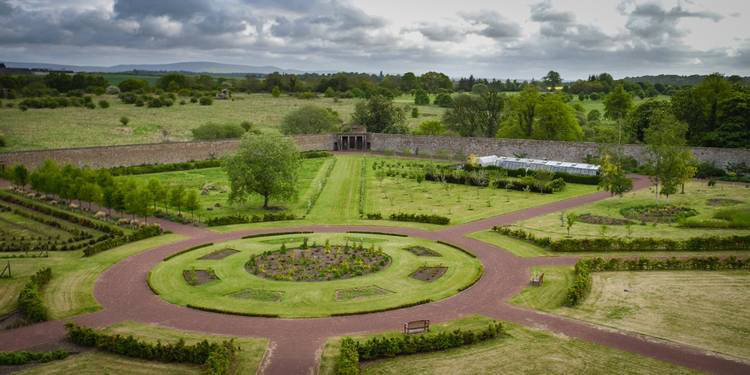
 RSS Feed
RSS Feed
